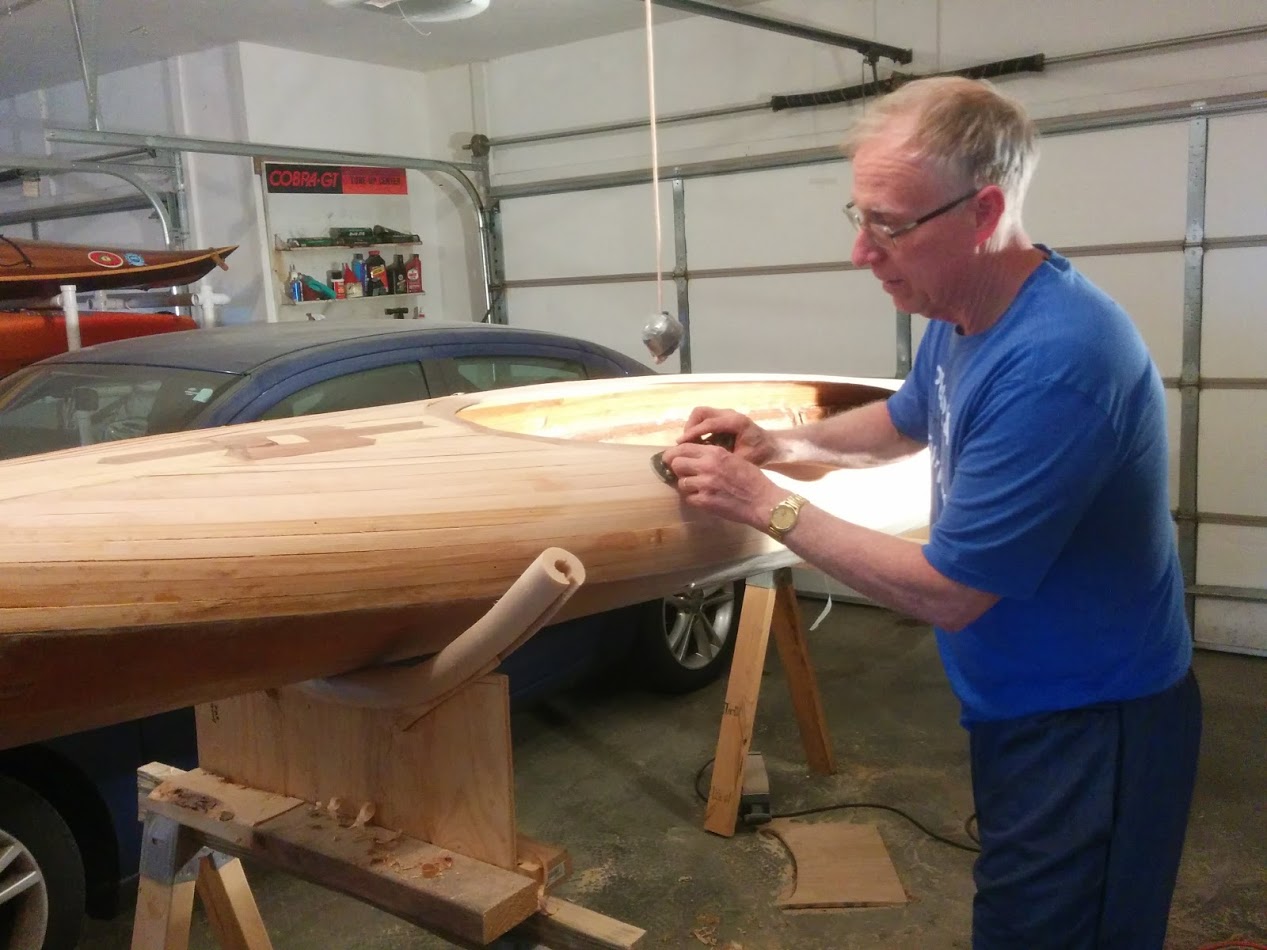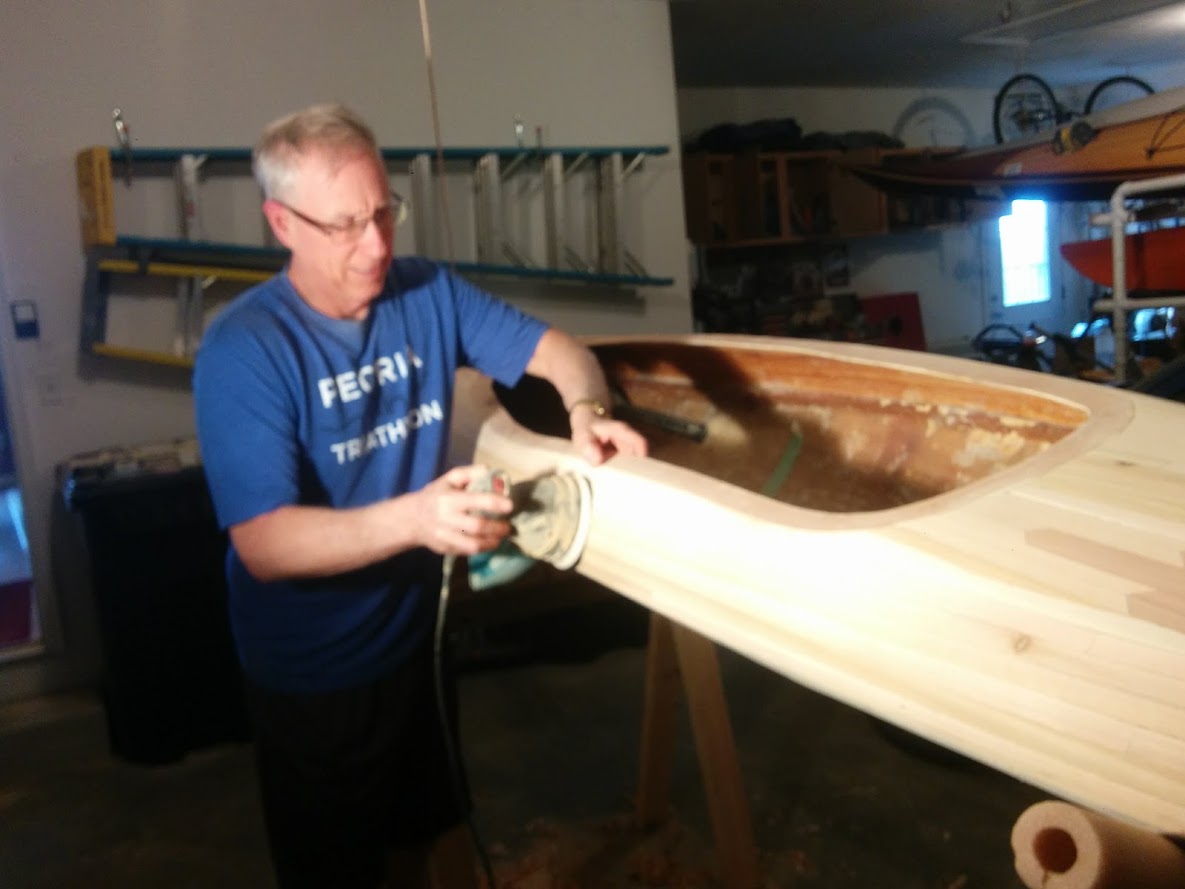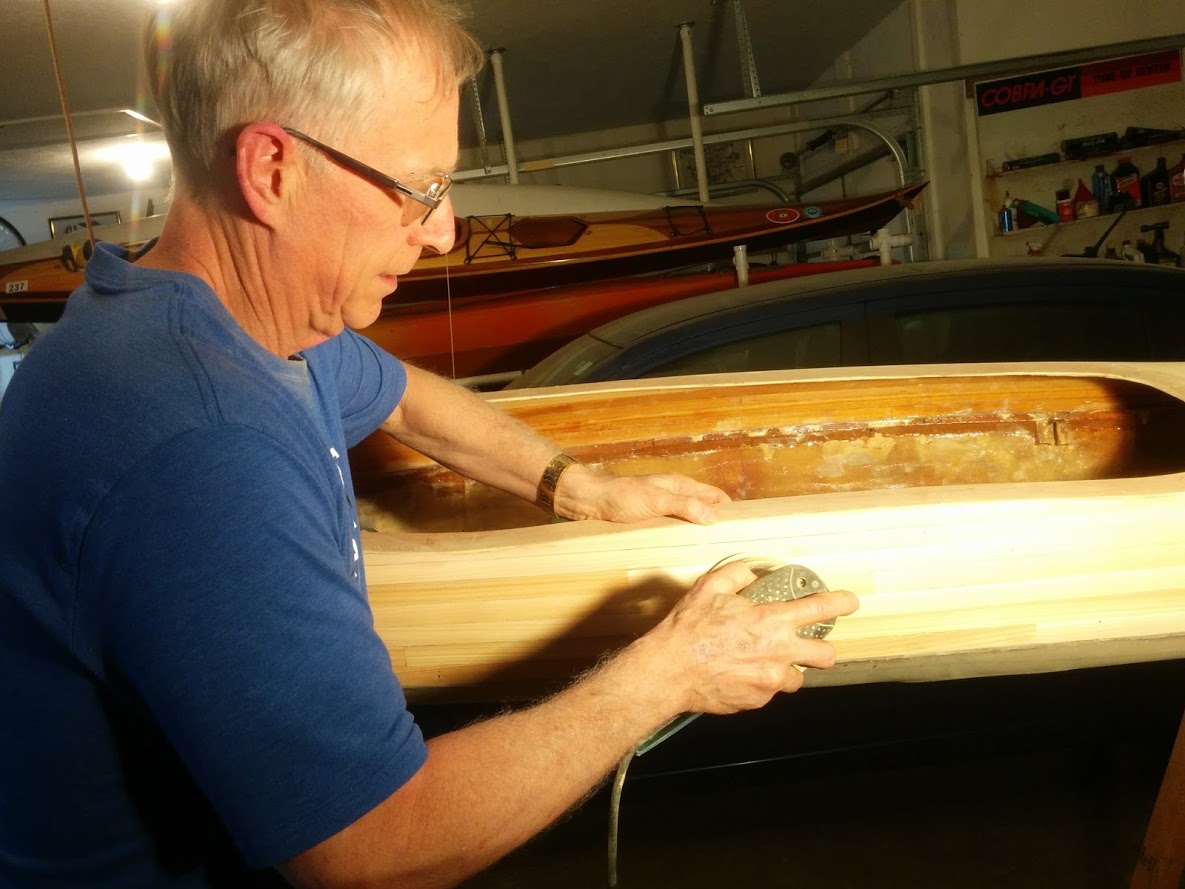Sanding and finishing is rewarding yet it can be so mundane and boring. It’s critical that you get it right because once the finish is on you have to live with your work.
This boat took a lot of sanding. Actually it took some planing to get it to a point where I  could sand it. And that’s my fault. I cut my own cedar strips to save money and because I shaped and cut my own forms, the strips didn’t always snuggle into each other as they should. I planed the edges at angles but I didn’t always get the strips to match up correctly. And some of the curves were especially tight (I had to follow the hull shape yet gain clearance inside the boat). Also I mostly used a building technique that did not use staples to hold the strips in place while drying.
could sand it. And that’s my fault. I cut my own cedar strips to save money and because I shaped and cut my own forms, the strips didn’t always snuggle into each other as they should. I planed the edges at angles but I didn’t always get the strips to match up correctly. And some of the curves were especially tight (I had to follow the hull shape yet gain clearance inside the boat). Also I mostly used a building technique that did not use staples to hold the strips in place while drying.
I used clamps to hold the strips not to avoid staple holes so much as to just to see how difficult and slower the building would go. It’s a common practice to staple the cedar strip to the form but the leaves tiny holes in the wood. The holes are hardly noticeable unless you do what I did on my first boat, not staple in a straight line. The uneven line of holes does draw the eye, at least it does for me.
I did on my first boat, not staple in a straight line. The uneven line of holes does draw the eye, at least it does for me.
I had some trouble keeping the strips tight against each other and that lead to small gaps and big uneven joints. Next time I will use a planing tool that Nick Schade (Guillemot Kayaks) developed just for that purpose.
So in quite few areas I ran my plane along the joints to save time with the 60 grit sander. It mostly worked except planing cedar can be tric ky. I found that even a sharp blade tended to pull and tear the soft cedar so had to settle for close before I used the orbital sander.
ky. I found that even a sharp blade tended to pull and tear the soft cedar so had to settle for close before I used the orbital sander.
But it did work out. After the 60 grit I moved to 150 then finally to 220. Really the 220 was mostly to get the scratches out the shaping was already done with the 60 grit.
Two personal notes of advice. First, cedar is a great wood to work with and can turn out beautiful when finished but cedar dust is just plain wicked. I’ve breathed and inhaled all kinds of stuff in my lifetime and seldom had any trouble, until I started ripping and sanding western red cedar. It made me cough and sneeze, so much so I started using a dust mask. Please use a mask when sanding or lots of cutting. You’ll save yourself a lot of headaches, literally.
Second, when sanding a large hollow boat, the sound of the sander is amplified so much so that you might have to plan your sanding when others are not around. Imagine what hammering on an empty 55 gal drum sounds like inside the house when your spouse is trying to watch Blue Bloods. I’m just saying.